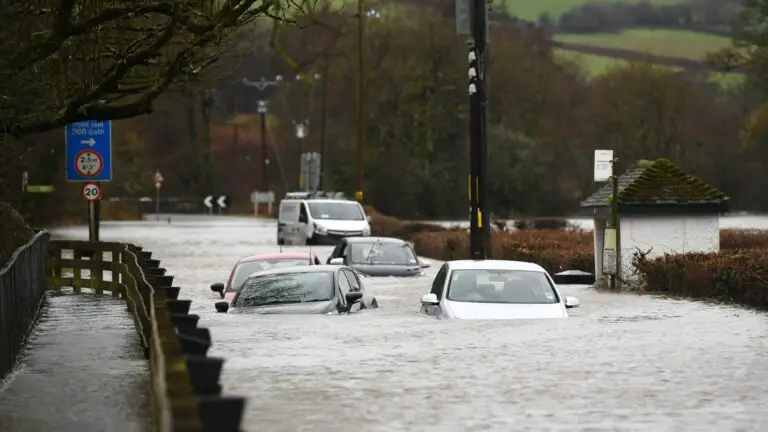BRITS Bracing for Heavy Rain and Flood Alert Along Cumbria Coast
Get ready for a wet spell! The UK is about to experience heavy rain and potential flooding, with a flood alert covering a 30-mile stretch along the Cumbria coast. If you live in areas like Allonby, Maryport, and Workington, which lie between Silloth in the north and Saint Bees in the south, it’s time to prepare for possible flooding from the Irish Sea in the next day or so.
The Environment Agency is sounding the alarm, particularly for low-lying spots such as Allonby, Maryport, and Workington. For the people living in this zone, extending around 30 miles, it’s important to stay tuned to local water levels and the latest weather reports. The advice is to avoid using low-lying footpaths for safety reasons.
This area at risk is located at the top of the Irish Sea, covering parts of the Channel of the River Esk and the River Eden’s estuary. These rivers flow from the north of the county near Carlisle into the sea.
The weather forecast from the Met Office indicates rain advancing from the west over the next day. Scotland is likely to bear the brunt of heavy rain, perhaps accompanied by thunder, while Cumbria can also expect some gloomy weather.
In the words of the Met Office forecast: “Rain will keep moving southeast on Tuesday, with sunny intervals on either side. Showers are likely in Scotland and Northern Ireland, potentially heavy and accompanied by thunder. Temperatures will be close to normal for late August.”
Around 10mm of rain could fall in Cumbria and Lancashire in the next 24 hours, says Met Office meteorologist Tom Morgan. He points out that recent heavy rain might have left the ground quite wet.
Yesterday, the wettest place in the UK was Warcop village in Cumbria, located about 60 miles inland from the coast, along the River Eden.
It’s important to heed the flood alert issued by the Environment Agency. They advise: “Flooding is possible in this area… Monitor local water levels and weather conditions. Avoid using low-lying footpaths or entering flood-prone areas. If you have a flood plan, start putting it into action.”
The history of the region reminds us of the real risk. In 2009, Workington and nearby areas experienced devastating flooding. Rivers Derwent and Cocker breached their banks due to 12.4 inches of rain in just 24 hours, causing widespread damage to bridges and roads, and forcing many to evacuate their homes.
It’s better to be safe than sorry – stay informed, stay safe!

